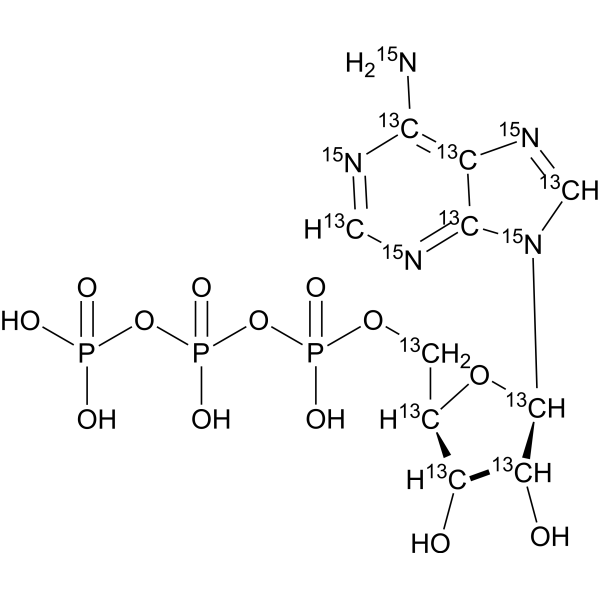ATP-13C10,15N5
Modify Date: 2024-04-08 14:40:07

ATP-13C10,15N5 structure
|
Common Name | ATP-13C10,15N5 | ||
|---|---|---|---|---|
| CAS Number | 752972-20-6 | Molecular Weight | 522.07 | |
| Density | N/A | Boiling Point | N/A | |
| Molecular Formula | 13C10H1615N5O13P3 | Melting Point | N/A | |
| MSDS | N/A | Flash Point | N/A | |
Use of ATP-13C10,15N5ATP-13C10,15N5 is the 13C and 15N labeled ATP[1]. ATP (Adenosine 5'-triphosphate) is a central component of energy storage and metabolism in vivo. ATP provides the metabolic energy to drive metabolic pumps and serves as a coenzyme in cells. ATP is an important endogenous signaling molecule in immunity and inflammation[2][3]. |
| Name | ATP-13C10,15N5 |
|---|
| Description | ATP-13C10,15N5 is the 13C and 15N labeled ATP[1]. ATP (Adenosine 5'-triphosphate) is a central component of energy storage and metabolism in vivo. ATP provides the metabolic energy to drive metabolic pumps and serves as a coenzyme in cells. ATP is an important endogenous signaling molecule in immunity and inflammation[2][3]. |
|---|---|
| In Vitro | Stable heavy isotopes of hydrogen, carbon, and other elements have been incorporated into drug molecules, largely as tracers for quantitation during the drug development process. Deuteration has gained attention because of its potential to affect the pharmacokinetic and metabolic profiles of drugs[1]. |
| References |
| Molecular Formula | 13C10H1615N5O13P3 |
|---|---|
| Molecular Weight | 522.07 |